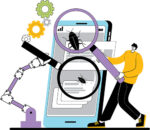
This year started out in much the same way 2020 ended — with people still uncertain about the future of work, whether or not their offices would reopen, and figuring out how to work from remote offices in their homes.
To address these issues, we’ve seen huge growth in certain market segments — collaboration tools such as Slack, Zoom and Teams; new digital platforms for hosting conferences replete with virtual exhibit halls, meetup rooms and other experiences (SD Times produced two this year, on value stream management and low code/no code development); and more digital transformations that include big moves to the cloud.
Once development teams got the work part of it down, those people had to manage their time — what hours should they work, what hours are family time, as part of the work-life balance people seek. What we’ve seen is that people are actually working more hours from home than they would at an office in an attempt to keep pace with the organizational demands for software delivery quickly and that will delight users.
This has been a big challenge for development managers, who can’t simply walk over to a desk to assess where a developer is at with a project. Often, a Microsoft Teams message or Google Meet invite will go unanswered for hours, putting a drag on the development effort.
This is the new work reality, and why, in the January issue of SD Times, we’re declaring 2022 The Year of Hybrid Work. Now that developers have settled into their new normal, this series will look at how workers can improve on software delivery and how managers can do a better job keeping the team humming.
But first, here’s a look back at what made news in 2021. All Year in Review stories will be published here throughout the end of the year. We wish you all a joyous holiday season and all the best for the new year.





